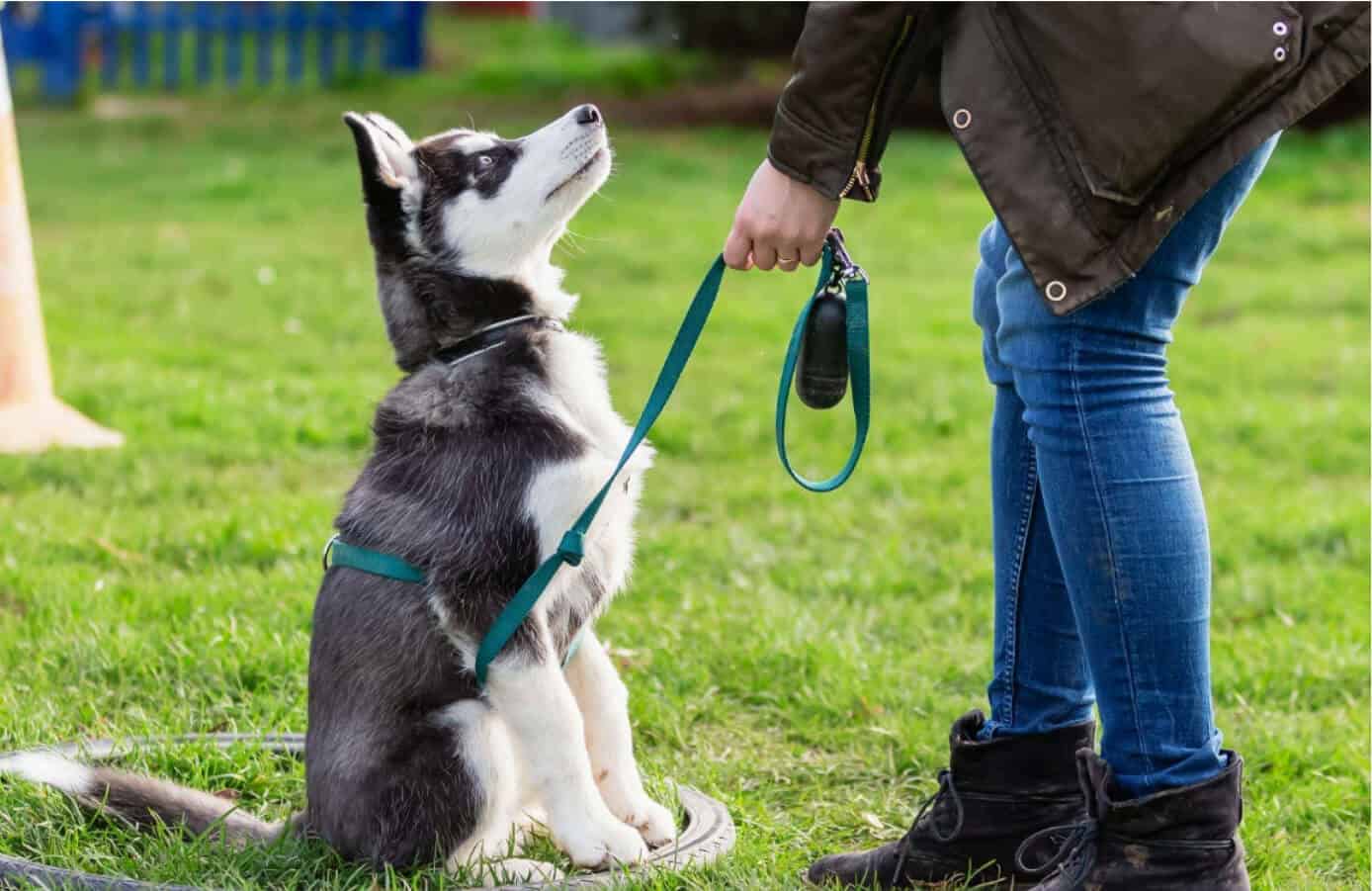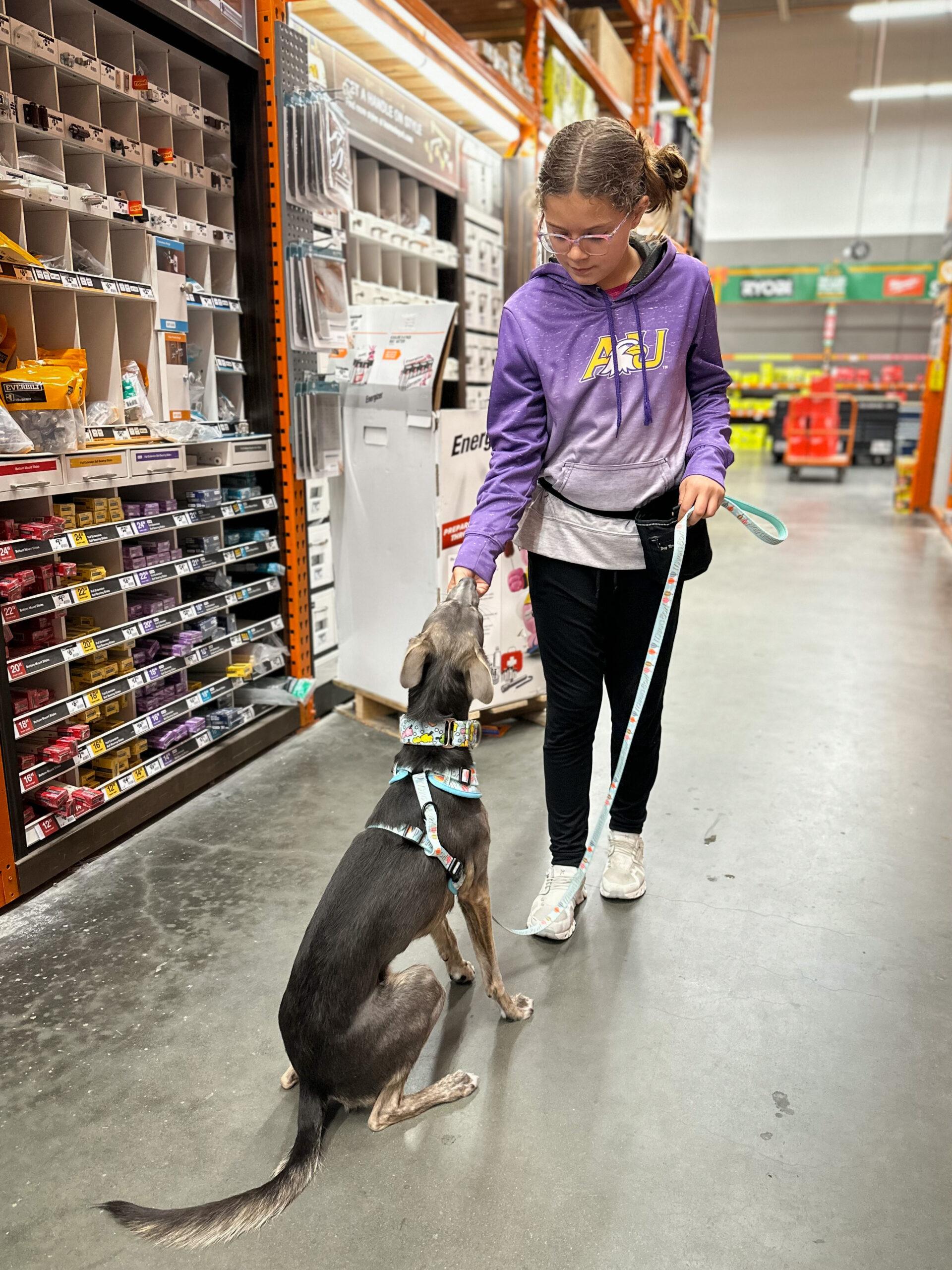Dog Training Techniques to Help Manage Aggressive Behavior in Dogs
Dog Training Techniques to Help Manage Aggressive Behavior in Dogs
Blog Article
Newbie's Overview to Effective Pet Training at Home
Efficiently educating a pet dog in your home calls for a nuanced understanding of canine habits and effective communication methods. Establishing clear training objectives, using high-grade rewards, and keeping uniformity across member of the family are essential aspects. Moreover, incorporating training into day-to-day routines can improve both engagement and retention. Several beginner fitness instructors encounter obstacles that may prevent progression. To navigate these complexities efficiently, it's important to explore numerous vital elements that can transform your strategy and cause an unified connection with your pet. What basic principles should every beginner understanding to guarantee success?
Comprehending Pet Actions
Recognizing canine actions is necessary for effective training and cultivating an unified connection in between people and their canine buddies. Dogs connect largely with body movement, vocalizations, and faces, making it important for proprietors to interpret these signals accurately. Identifying actions such as tail wagging, grumbling, or cowering can give understandings into a canine's emotion and objectives.

Common behavior issues, such as hostility, stress and anxiety, or too much barking, commonly come from misunderstandings or unmet requirements. Observing and dealing with these issues immediately can avoid acceleration and make certain a positive training experience. By promoting a deep understanding of pet actions, owners can customize their training methods to suit their canine companions, inevitably causing a happy and well-behaved animal.
Necessary Educating Tools
A fully equipped training room can dramatically boost the performance of dog training at home. Important training tools guarantee that both the dog and the fitness instructor can participate in efficient sessions that promote discovering and bonding.

Buying a tough leash and a comfy, well-fitting collar or harness is essential for security and control. These devices assist develop borders and guarantee the pet continues to be safe during training. In addition, a designated training location, without distractions, help focus for both the pet dog and the instructor.
Educating help such as training pads, cones, or agility tools can also boost the experience by presenting variety and challenges. Lastly, having a notebook or electronic application for tracking progress can be very useful, enabling you to keep in mind successes and areas for enhancement. Using these vital tools will certainly create a favorable training atmosphere and lay the foundation for effective understanding.
Producing an Educating Regimen
Developing a consistent training routine is essential for reliable pet dog training at home. A well-structured routine not only aids in enhancing desired habits but likewise offers your canine with a feeling of safety and security and predictability. To create an effective training routine, start by identifying particular training objectives, such as fundamental commands, chain strolling, or house-training.
Pick a marked time daily for training sessions, ideally when your dog is responsive and sharp. Sessions must be brief, around 5 to 15 minutes, to preserve emphasis and prevent fatigue. Uniformity in timing and environment will certainly enhance your dog's understanding experience.
Integrate training into daily activities to strengthen skills. Technique commands during walks or mealtime, which incorporates finding out right into natural routines. Additionally, stay flexible and change the regular as required, accommodating your dog's their explanation energy degrees and mood.
Favorable Support Methods
Positive reinforcement strategies are basic to efficient pet dog training, promoting wanted habits with benefits rather than penalty. This method uses positive stimulations, such as deals with, praise, or playtime, to encourage canines to repeat particular actions. The keystone of this strategy is timing; rewards should be offered immediately adhering to the preferred habits to create a clear organization.
When executing positive reinforcement, it is necessary to pick benefits that are encouraging for your canine. High-value treats, such as little items of poultry or cheese, can be particularly efficient throughout training sessions. Additionally, varying the incentives can keep your pet dog's passion and interest.
Begin with simple commands, like "rest" or "stay," and progressively progression to extra complex tasks. Uniformity is crucial; ensure that all family participants utilize the same commands and benefit systems to prevent confusion.
Moreover, it is vital to stay client and prevent frustration. Pet dogs, like humans, discover at their own speed. By fostering a supportive training setting with favorable reinforcement, you can improve your dog's understanding experience while enhancing the bond between you and your fuzzy friend, laying the foundation for successful training end results.
Common Training Obstacles
While educating a canine at home can be a rewarding experience, it commonly includes a collection of common difficulties that can evaluate both patience and uniformity. One common problem is distraction. Pets may become easily sidetracked by sounds, movements, or even fragrances in their environment, making it tough to maintain their focus during training sessions.
One more challenge is incongruity in commands and support. It can impede and perplex the pet progress if household participants use various cues or incentives. Developing a unified strategy is vital for reliable interaction.
Additionally, pet dogs can experience aggravation or stress and anxiety, particularly if they do not recognize what is anticipated of them. This can lead to unwanted actions, such as barking or chewing.
Ultimately, the timing of support is critical (Dog training). Postponed incentives can decrease the efficiency of positive reinforcement, as canines might stop working to attach the actions with the reward
Getting rid of these challenges calls for commitment, clear communication, and an organized training strategy. Acknowledging and dealing with these typical barriers will pave the means for a much more successful and pleasurable training experience in the house.
Final Thought
In conclusion, successful pet dog training at home demands an extensive understanding of canine behavior and effective interaction approaches. By developing clear training objectives and making use of top notch treats along with favorable reinforcement, the training process comes to be extra gratifying for both the canine and the instructor.
Establishing a consistent training regimen is necessary for reliable pet training at home.Favorable support strategies are basic to reliable pet dog training, advertising desired actions via incentives instead than penalty (Dog training). By fostering a helpful training setting with positive reinforcement, you can enhance your dog's learning experience while strengthening the bond look at more info in between you and your fuzzy buddy, laying the groundwork for effective training outcomes
In final thought, my company successful pet training at home necessitates a comprehensive understanding of canine habits and efficient communication strategies. By developing clear training goals and using top notch deals with together with favorable support, the training process becomes much more gratifying for both the pet dog and the trainer.
Report this page